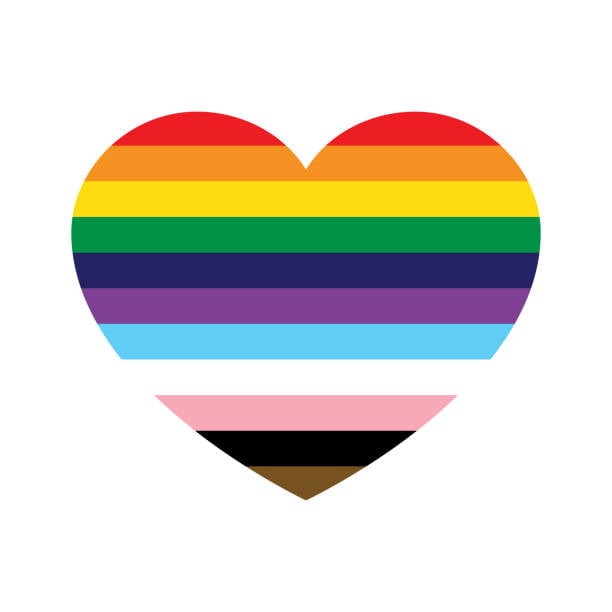- cross-posted to:
- politics
- cross-posted to:
- politics
In 2018, the lesbian activist Urvashi Vaid embarked on what would become her final project before her death in 2022.
From 1989 to 1992 Vaid served as the executive director of the National Gay and Lesbian Task Force — now the National LGBTQ Task Force — and was the first woman of color to lead the organization.
She was a fierce activist during the HIV/AIDS crisis and went on to start the first lesbian political action committee, served on the boards of ACLU and Planned Parenthood, and even co-founded the American LGBTQ+ Museum of History and Culture.
Vaid had realized there wasn’t robust research about the discrimination and violence LGBTQ+ women were facing, says Jaime Grant, a sex educator and activist who collaborated with Vaid.
So Grant and Vaid, along with 22 other scholars and activists, got together and developed a nationwide survey of LGBTQ+ women’s lives and experiences with disability, discrimination, harassment and intimate partner violence.
Over the course of two years, they surveyed more than 8,000 people who either currently identify or previously identified as a woman about what life looks like for LGBTQ+ women who partner with women in the U.S.
The executive summary of the survey report, entitled “We Never Give Up the Fight: A Report of the National LGBTQ+ Women’s Community Survey,” was released this week. It found that while LGBTQ+ women experience high rates of violence in multiple areas of their lives, they regularly rely on their friends, not institutions – such as the education system, law enforcement, or religious organizations – for support.
Specifically, 76% of respondents reported experiencing harassment, discrimination, or violence in educational settings, and 43% said their childhood faith traditions became a source of conflict because of their identity as an LGBTQ+ woman.
“Across the board, institutions that are critical to our well-being are failing us,” says Grant.
According to the survey, LGBTQ+ women experience intimate partner violence at higher rates than women in the general population, with 47% of respondents reporting experiences with emotional violence – defined as gaslighting, control over social life, or isolation from family – as well as physical, or sexual violence from their partner.
One of the rich pieces of data the survey provides is more information about who is doing the abusing and how. “We actually know very little about the people who are being abusive,” says anti-violence advocate Shannon Perez-Darby, who helped the team of researchers make sense of the survey data for the intimate partner violence section. Having a better understanding of both the abused and the abuser will help advocates against domestic violence and healthcare providers offer better support to survivors of intimate partner violence.
In the intimate partner violence section, respondents gave details about their abusers, no matter the gender or sexuality. “Many lesbian identified people in the study had children with cisgender, heterosexual men and left marriages,” explains Grant.
The results showed that cisgender, heterosexual men use more lethal forms of violence that have a bigger impact on someone’s ability to stay alive. In contrast, women and gender-diverse people use more social control as a form of violence, the survey found.
“We did see differences from the survey data that was telling us that the kinds of harms that cisgendered men were causing to their queer female partners was different than the kinds of harms that queer women who were being abusive were enacting on their partners,” says Perez-Darby.
Perez-Darby warns against making simple conclusions about patterns of abuse across gender simply based on the findings of the survey. “The impact of domestic violence was equally crushing to their lives,” says Perez-Darby, “No matter the gender or sexual orientation of the partner who was abusing them.”
Grant hopes that this data can serve as the grounds for education campaigns in healthcare settings where doctors may come in contact with different types of domestic violence survivors, as well as in the broader LGBTQ+ community.
The report also shows that only 20% of domestic violence survivors sought support from institutions – such as hospitals, domestic violence shelters or the police – whereas more than half of survivors did not look for help in these spaces and instead relied on their friends.
Therein lies the potential solution for this problem. “The most consistent aspect of domestic violence is isolation,” says Perez-Darby. “If there was one thing we could all do, it would be to stay better connected to our people, to our friends, and to our family.” The strong value that LGBTQ+ people place on their queer and trans communities is what Perez-Darby calls a “resiliency that can help us prevent domestic violence.”
The survey also gives insight into the joy and resilience that exist in the LGBTQ+ community.
One of the surprising results from the survey for Grant was that gender and sexuality remain fluid and changing for LGBTQ+ women. 24% of respondents reported their gender as “fluid or changing” and 32% described their sexuality as “fluid or changing.” “LGBTQ+ women’s identities across the board are very expansive,” says Grant.
This fluidity “reflects how things are changing in our society in terms of understanding nuances in gender and sexuality,” says Amanda Pollitt, an assistant professor at the Center for Health Equity Research at Northern Arizona University. “I wasn’t really expecting to see quite so much diversity and especially gender identities.”
One of the last questions of the survey asked: “What are your favorite things about being an LGBTQ+ woman?”
Of the 21,000 answers from 7,000 respondents, Grant says what people love is self-determination, community and the freedom to choose who they want to be with. For Perez-Darby, the survey underscores “the resiliency of queer and trans communities, how we have held each other, and all the different ways we figure out how to be in relationship with each other to survive and thrive.”

